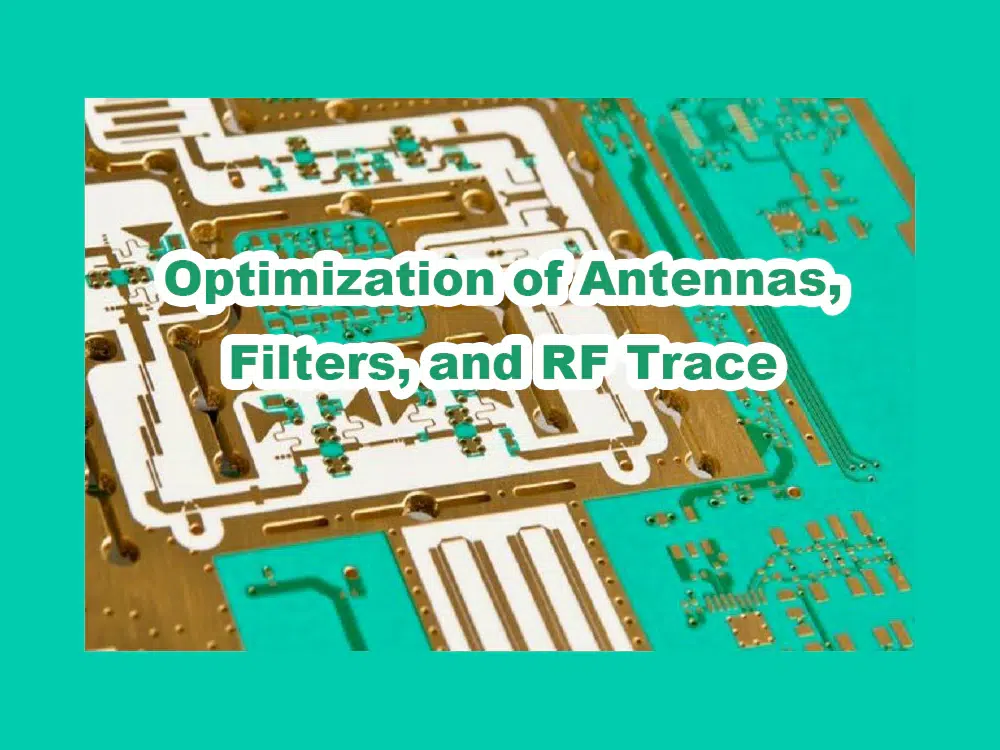Radio frequency (RF) PCB design involves a series of complex considerations, including optimization of antenna design, filter design, and RF Trace. These factors are critical to the performance of wireless communications and RF applications. Here are some suggestions for RF PCB design:

Antenna design
Choose the appropriate antenna type: Choose the appropriate antenna type according to the application requirements, such as patch antenna, PCB antenna, external antenna, etc.
Antenna Layout: The layout and location of the antenna is very important. Avoid contact of the antenna with other metal components or wires to reduce interference.
Matching Network: Add a matching circuit to ensure impedance matching between the antenna and the transmission line to maximize energy transfer.
Antenna Tuning: Tune the antenna based on the operating frequency for optimal performance.
Ground plane: Keep the ground plane near the antenna as large and flat as possible to improve radiation efficiency.
Filter design
Frequency selection: Select the appropriate filter type and frequency characteristics to block unwanted frequency interference from entering or leaving the RF system.
Bandwidth: Select the appropriate filter bandwidth based on application needs. Narrower bandwidths generally provide better selectivity and rejection.
Filter Types: Common filter types include low-pass, high-pass, band-pass, and band-reject filters. Choose the type that best suits your application.
Filter layout: Place the filter along the RF signal path and pay attention to impedance matching to avoid reflections and losses.
Optimization of RF Trace
Types of RF Trace : Select the appropriate RF Trace, such as microstrip, coaxial cable, etc., to meet bandwidth, loss, and impedance matching needs.
Impedance matching: Ensure that the impedance of the RF trace matches the impedance of the surrounding circuitry to minimize reflections and signal loss.
Length and width of RF Trace: The length and width of a RF trace affect the characteristics of signal transmission. Optimize these parameters based on design frequency and impedance requirements.
Signal layer and ground layer: RF PCB usually adopts a multi-layer design to ensure the connection and separation between the signal layer and ground layer.
Arrangement and Separation: Carefully arrange RF trace on the PCB to prevent crosstalk and interference.

Electromagnetic compatibility (EMC)
Consider the electromagnetic compatibility of the RF PCB to ensure that it does not cause interference to surrounding electronic equipment and is not affected by external interference.
Use a shield or RF shielding material to isolate the RF section to reduce radiation and sensitivity.
Conduct EMC testing to verify PCB performance and compatibility.
Debugging and testing
Reserve debug and test points for RF performance testing and troubleshooting when needed.
Use professional RF test equipment to verify PCB performance and frequency response.
Conclusion
RF PCB design requires professional knowledge and experience to ensure that the system can operate stably within the target frequency range and meet performance requirements. Close collaboration with RF engineers and professional PCB manufacturers is key to ensuring success. At the same time, continuous testing and verification are also important steps to ensure RF system performance.










